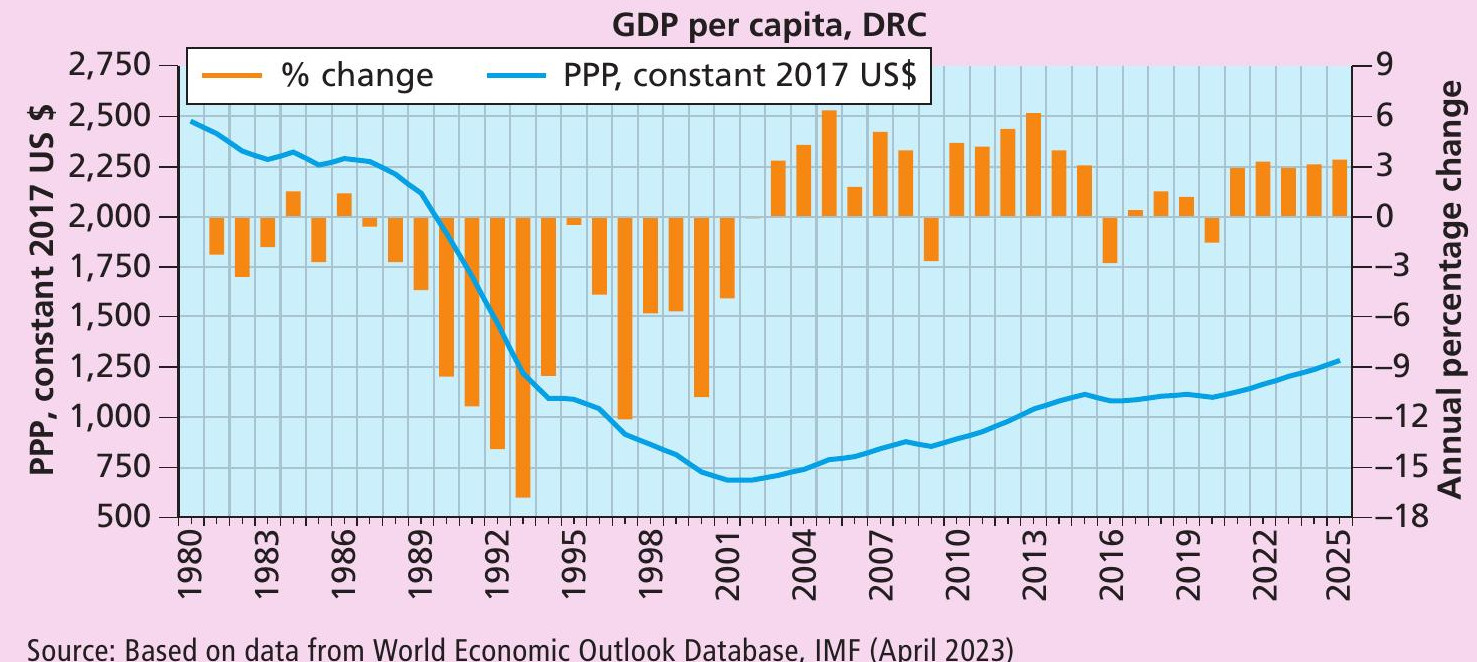
The Democratic Republic of Congo (DRC) is one of the world’s poorest countries. It is about the size of Western Europe and according to the World Bank in 2022, nearly 60% of Congolese, around 60 million people, lived on less than $2.15 a day — about one in six people lives in extreme poverty. Yet the country is rich in natural resources such as cobalt and lithium, which are the key components used in batteries.This could support the world’s transition away from fossil fuels. On top of this, the country has an abundance of arable land, immense biodiversity, and the world’s second-largest rainforest.
The answer — the natural resource curse. Sometimes known as the poverty paradox, this is a phenomenon that often occurs in countries with an abundance of natural resources. Researchers began to notice in the 1950s and 1960s (when measuring the size of the economy via GDP) that many economies rich in natural resources were not growing as fast as other countries of comparative size, but with less reliance on natural resources. As more data became available, a 1995 study by Sachs & Warner found a strong correlation between natural resource abundance and poor economic growth.
Your organisation does not have access to this article.
Sign up today to give your students the edge they need to achieve their best grades with subject expertise
Subscribe



